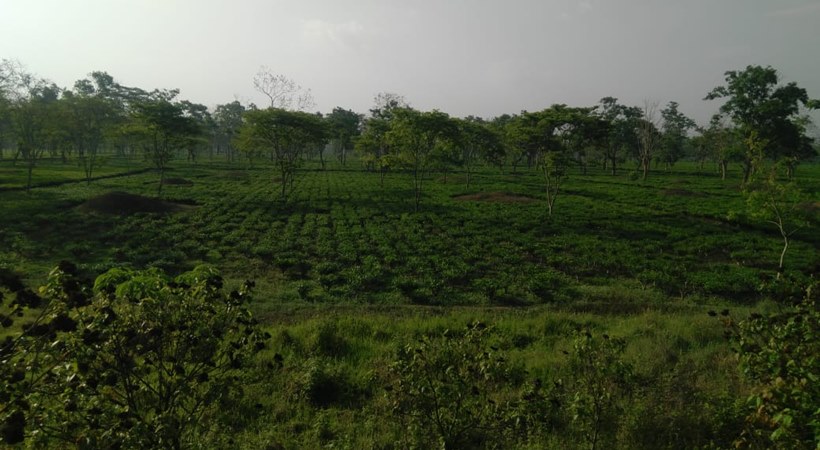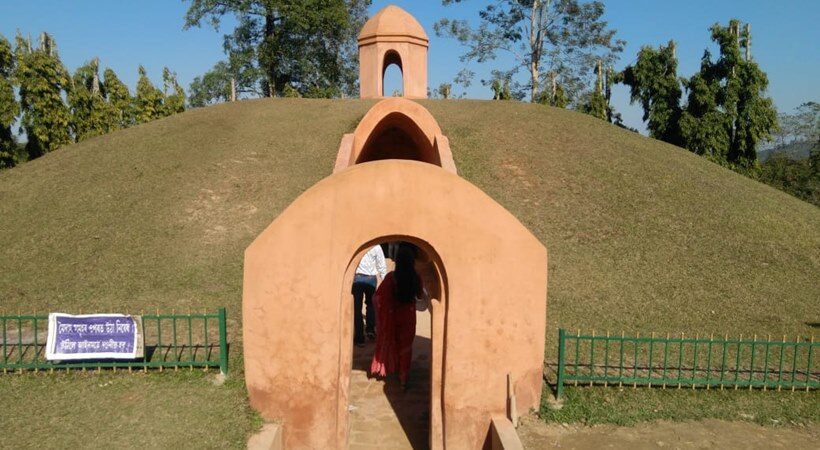It is noteworthy that hundreds of “maidams” still stand strong like hillocks in organised rows in 5 to 6 miles domain of Charaideo district, Assam, India. The whole area, known as the Great Royal Cemetery of Charaideo, is an episode from the past that had undergone and sustained adverse weather conditions for centuries.
Ahom maidams are analogous to the Egyptian pyramids except in physical structure and size but built with the same belief of life after death. After physical death, the spirit is supposed to live and makes a journey to eternity, hence creating the mausoleum (maidam / pyramid).
Read More: When salt was a Luxury
The pyramids were made of stone with a polygonal or square base having triangular sides meeting at the apex, while the maidams are dome-shaped, covered with earth and concrete sepulchral chamber in the underground base made with stones and bricks.

A Brief History of Assam and Tai-Ahom Religion and Customs speak of the engineering marvel used in its construction. Apart from stones, bricks and sand, the cementing technique was a great deal of ancient science. Karal (cement of historical time) is a mixture prepared from black lentil, molasses (jaggery), duck eggs, barali maach (a kind of sheatfish/catfish variant), limestone, sticky rice and snail shells as the prime elements.
The general height usually ranges from 45 to 60 feet and the phenomenal one of King Gadadhar Singha’s maidam was 90 feet tall. There were dedicated roads, a city, chamber and water pond to cater special attention to the dead body. The facility is chiefly utilised to embalmed the body for several days to preserve the royal bodies similar to that of mummification in Egypt. On the east of the burial ground, the king and prince were entombed and the queen and princess to the west.
Every maidam has an underground chamber with one or two storey and several compartments to accommodate the imperial’s property. It consisted of gold and silver utensils, xorai, baati, baan kahi, maihang (special silver platters and trays mounted on stands), royal hengdan (sword), ten or more living attendants, bed-stead, silver mat, decorated pillows and quilt with gold embroidery and precious stone. These were arraged as if the Swargadeo (King) is alive.
Greed for wealth is a part of human nature and colonial rulers proved it every way when they learnt about the hidden treasure in these maidams, who exploited every depth to rob it as a bounty. Even present-day exploitation is in the form of tea estate being expanded over the maidam area without considering the 800 years old heritage.



















